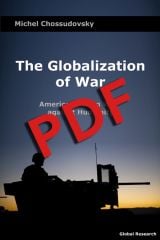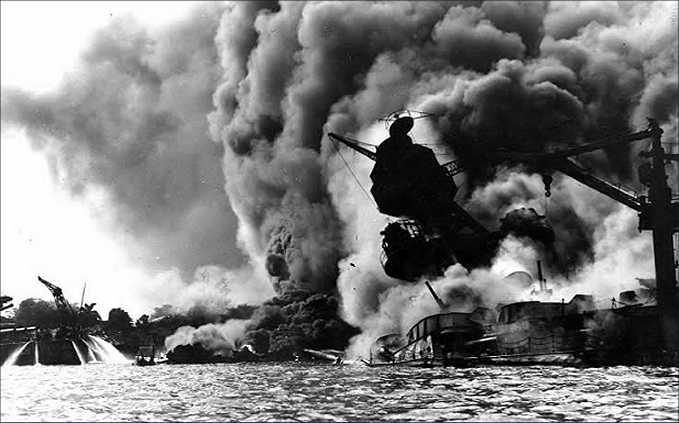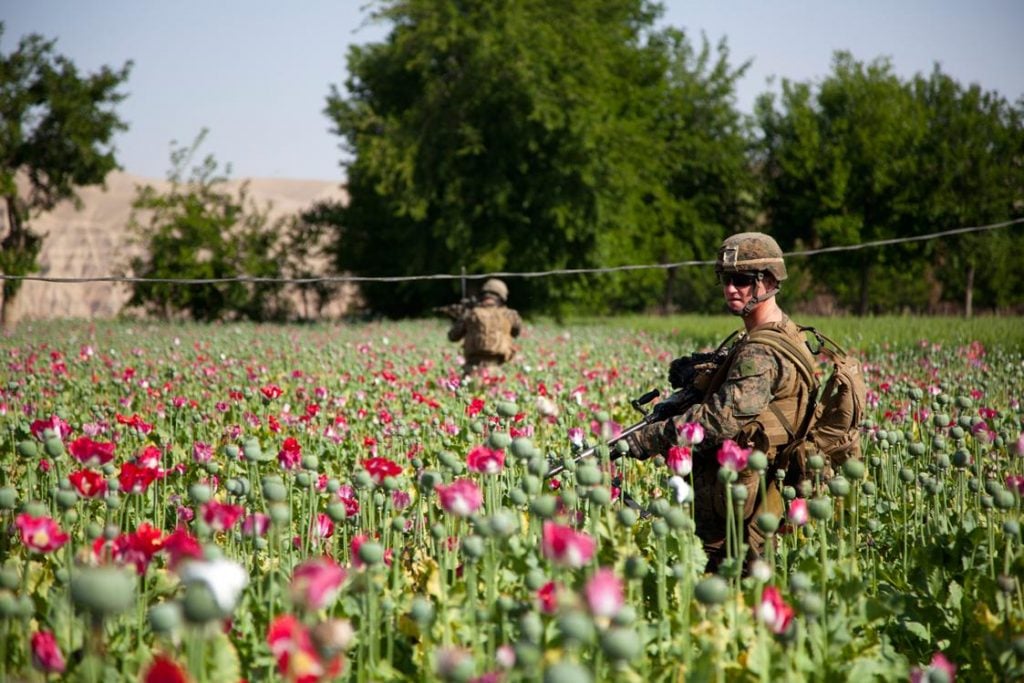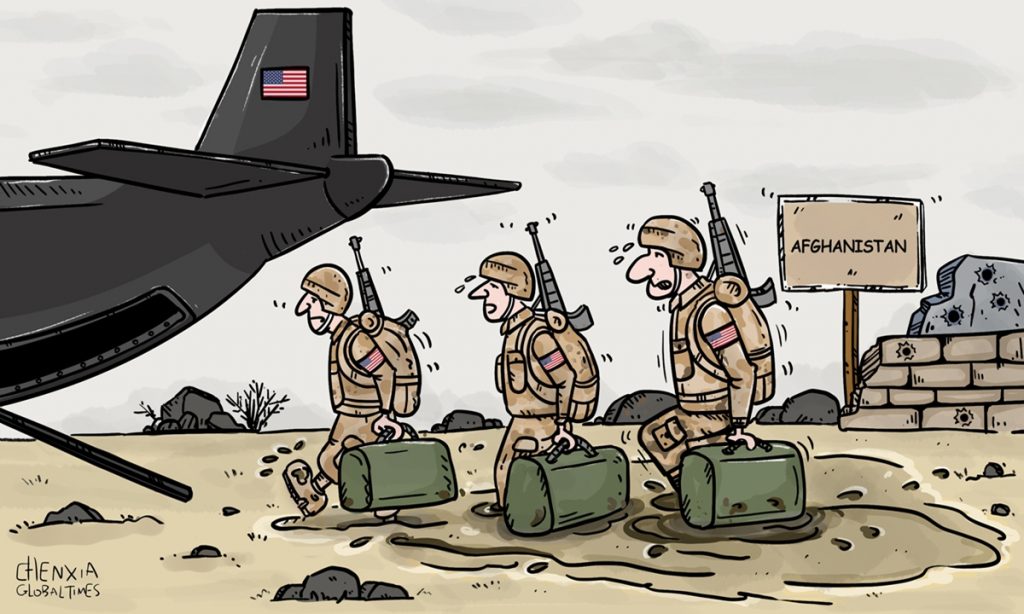History of Post Cold War Era: Western Interference and Subversion Abroad
Part II

All Global Research articles can be read in 51 languages by activating the Translate Website button below the author’s name (only available in desktop version).
To receive Global Research’s Daily Newsletter (selected articles), click here.
Click the share button above to email/forward this article to your friends and colleagues. Follow us on Instagram and Twitter and subscribe to our Telegram Channel. Feel free to repost and share widely Global Research articles.
***
Read Part I:
The History of US-NATO Led Wars: “Exporting Democracy” through Acts of Subversion and Infiltration
By , November 28, 2023
Beginning in 1997 the US had been conducting military exercises in former Soviet republics, under the banner of NATO’s so-called Partnership for Peace Program. In 1999 Washington helped to integrate Georgia, Ukraine, Uzbekistan, Azerbaijan and Moldova into an organisation (GUUAM) that was a potential step to including those territories in NATO, and which was meant to rival the Commonwealth of Independent States (CIS) led by Russia.
The Western powers have since overlooked the fact that Russia has recovered significantly as a major power this century, experiencing much improved economic growth and living standards. In 2022 the percentage of the Russian population living below the poverty line was 9.8%. That same year 12.4% of Americans were living below the poverty line. The average yearly salary of a Russian citizen is substantially higher than people living in notable countries like Argentina, Brazil, Mexico, China, Iran and Egypt.
America and its European allies have been guilty of underestimating Russia’s military strength and capabilities, which includes the country’s vast arsenals of nuclear and conventional weaponry. Russia had no alternative in the first place but to acquire nuclear bombs, in 1949, which came as a natural response to America’s possession of such weapons and their unnecessary use in 1945 against two Japanese cities (Hiroshima and Nagasaki), at a time when there was no doubt as to the outcome of the Pacific War.
Top level US military officers, General Dwight Eisenhower and Admiral William Leahy, made it clear afterward that there was no need to drop atomic bombs on Japan because, by August 1945, Tokyo was in a hopeless position and close to surrendering.
Japan counted among its adversaries not only the leading Western states but also the Soviet Union, fresh from victory over Nazi Germany. Hisatsune Sakomizu, the Chief Secretary to prime minister Kantaro Suzuki, estimated that Japan could have held out until October 1945 at the latest before surrendering.
If Washington was prepared to use nuclear bombs against a non-nuclear power that was virtually defeated, then it is likely they would have been prepared to use them against their main international rival, Russia, which prompted the Soviet government to create its own nuclear bombs in what was a necessary defensive measure in order to protect the country. From the 1950s onward Russia’s nuclear weapons have acted as a deterrent.
We can imagine how Washington would respond were a rival power encroaching on its spheres of interest in the Western hemisphere. The Americans in all probability would react with military force. Regardless of realities like these NATO continued with its provocative enlargement, in spite of repeated warnings of the consequences.
Author Moniz Bandeira wrote,
“The Russian Minister of Foreign Affairs Sergei Lavrov and other authorities had reiterated that Moscow would strongly oppose NATO’s expansion in Eastern Europe, since it perceived it as a potential military threat. Ukraine, in particular, remained ‘an emotional and neuralgic point,’ Minister Sergei Lavrov stressed, adding that underlying strategic considerations and policies further strengthened Russia’s opposition, just as it opposed Georgia joining NATO”.
After 1991 the Soviet Union may have ceased to exist but this was not because Russia had been defeated militarily. The country retained its nuclear arsenal and military and economic potential. Russia could not be overcome by armed force and subjugated, as for example Japan was. Russia is also a resource-rich state and contains more natural gas and oil than the US and China put together.
Japan on the other hand has been lacking in natural resources. It was this weakness of the Japanese that proved a critical factor in their decision to begin hostilities against the Americans on 7 December 1941, when Tokyo launched an aerial bombardment on the large US naval base in Pearl Harbor, Hawaii.
Following a direct hit from Japanese war planes, the USS Arizona burns and sinks in Pearl Harbor. [Source: chiff.com]
Just over four months before, on 26 July 1941 Roosevelt’s government, in response to the Japanese Army invading southern French Indochina, enacted a series of crippling economic sanctions on Japan which included freezing all Japanese assets in America. Britain and the Dutch government-in-exile followed suit. The Western sanctions immediately resulted in 90% of Japan’s oil imports being wiped out along with 75% of the country’s foreign trade.
As a result of the sanctions of 26 July 1941, it has been commonly estimated that Japan would have run out of oil at the end of January 1943. Yet by late September 1941, after just two months of sanctions, Japan’s remaining oil reserves had fallen by an alarming 25%, and at that rate of consumption they would have consumed all of their oil in 1942. Tokyo chose direct military confrontation with the US and further expansion to solve their problems.
Japan’s decision to enter the war against the Americans would backfire terribly, and after 1945 the defeated country was coerced into the US-led liberal order. Japan became a peripheral state, whereas Russia remained a player state to borrow a phrase of Halford Mackinder. Russia is located in the centre of Eurasia, a dominant position allowing the country to spread its influence in several directions such as Europe, the Caucasus, Central Asia and East Asia.
Similar to Japan, the European Union states are short of natural resources and have depended to a considerable extent on fossil fuel supplies from Russia. The Europeans have been much more dependent on Russia than the other way around. NATO and EU membership has deprived many European countries of their independence and from pursuing policies which are within their interests.
Earlier this century the US attempted to expand its influence into Central Asia and the South Caucasus, focusing on states such as Georgia and Azerbaijan. Washington viewed those countries as pawns on a chessboard, enabling them to shift military hardware and NATO troops through the South Caucasus towards Afghanistan to the south-east, during what the White House called the “war on terror”.
Georgia and Azerbaijan were also pipeline corridors, that could allow the West to navigate raw materials without crossing Russian or Iranian territory. A US presence in Azerbaijan was concerned too with a possible invasion of Iran which borders Azerbaijan to the south. After the Iranian revolution of the late 1970s, Iran has been viewed in Washington as a major foe.
One of the factors behind the Bush administration’s decision to attack Iraq in 2003 was to tighten the encirclement of Iran, which shares a 994-mile border with Iraq. As time moved on it was apparent that the US occupation of Iraq was failing disastrously. If the Americans could not subdue a fragile country like Iraq, they would have little hope of conquering a far larger and stronger state like Iran.
The terrorist attacks of 11 September 2001 (9/11) against America enabled the White House to increase the expansionist goals of the country’s foreign policy. Zbigniew Brzezinski, the former US National Security Advisor, wrote that Japan’s bombing of Pearl Harbor had united the American public behind the nation’s entry into the Second World War; just as the 9/11 atrocities led to significant support in America for military action abroad.
U.S. troops guarding an opium poppy field in Afghanistan.
Before Pearl Harbor, the majority of Americans were opposed to military involvement in what they felt was a faraway conflict their country should keep out of. Washington drew comparisons between Pearl Harbor and 9/11, in order to justify what were unprovoked invasions of Afghanistan and Iraq. Neither country was involved in the terrorist assaults against America.
Regarding the reasons behind the 9/11 attacks, the leader of terrorist group Al Qaeda, Osama bin Laden, outlined his views on the subject in November 2002. Bin Laden mentioned the hardships of the Palestinian population, who were driven from their homes by the Israelis with the support of America and its allies; US intervention in Somalia under the pretext of “humanitarian action”; the deaths of 1.5 million people in Iraq because of sanctions applied against the country since 1990 by the Western powers; and the US bombing of the people of Afghanistan.
Clearly then, Bin Laden and his cohorts had reasons to be angry, though this does not for a moment condone their terrorist activities which often deliberately targeted civilians. In November 2002 Bin Laden predicted the US would suffer a “military defeat” in Afghanistan and that they would be forced to withdraw from the country, which is what unfolded 10 years after Bin Laden’s death.
Afghanistan withdrawal by the Pentagon portrayed in Global Times
Washington’s intervention in Afghanistan from 7 October 2001 was not principally related to 9/11, and the invasion was planned since mid-July 2001 Niaz Naik had said, a well-known Pakistani politician. He spoke with high-ranking US officials in the middle of July 2001 at a UN-sponsored meeting concerning Afghanistan which was held in Berlin. The American authorities informed Naik that Washington would take military action against Afghanistan before mid-October 2001, that is prior to the arrival of the snowfalls.
Afghanistan is a strategically important state within Eurasia, and shares frontiers with Iran, Pakistan and China along with the Central Asian countries of Turkmenistan, Uzbekistan and Tajikistan. In 2001 Uyghur insurgents, from the region of Xinjiang in north-western China, were undergoing training in Afghanistan in the same camps where the CIA had previously trained Islamic terrorists to fight against Soviet forces in Afghanistan during the 1980s.
The Uyghur extremists, supported by the CIA, had been waging war on Chinese authorities in Xinjiang which included blowing up vehicles and marketplaces and assassination attempts against Beijing’s officials. Between 1990 and 2001 Uyghur fighters, belonging to the terrorist organisation the East Turkestan Islamic Movement (ETIM), carried out more than 200 terrorist attacks.
The ultimate goal of the Uyghur fundamentalists is to sow instability in Xinjiang and separate the region from China by creating a Muslim state. Xinjiang has been part of China since the mid-18th century and has close ties to Beijing.
To the west of China, by intervening militarily in Afghanistan in 2001 the US expected to eliminate the rule of Islamic militant group, the Taliban, which had come to power in 1996 with the assistance of Pakistan’s intelligence agency, the ISI. By removing the Taliban it was hoped the required “stability” would be created in Afghanistan to allow the California-based fossil fuel corporation, Unocal, to construct a gas pipeline from Uzbekistan through Afghanistan to Pakistan. Unocal had a history of being advised by the US State Department, the CIA and the ISI.
In addition, the building of two oil pipelines was planned by the West, the first across Afghan terrain through Pakistan to the Indian Ocean and the other, the Central Asia Oil Pipeline Project (CAOPP), which would be 1,050 miles long originating from Chardzhou in Turkmenistan across Afghanistan to an oil terminal at Pakistan’s coastline. According to journalist John Pilger, those involved in the pipeline plans relating to Afghanistan were American politicians like Dick Cheney, vice-president to George W. Bush, and James Baker, a former Secretary of State, and Brent Scowcroft, a former National Security Advisor.
Afghanistan is no ordinary country, however. A landlocked nation, bigger than France, about 80% of Afghanistan’s entire territory consists of either mountains or deserts. The average elevation in Afghanistan is 1,884 metres above sea level, making it the world’s 7th highest country.
Afghanistan’s air is thin and can be difficult to breathe, especially for newly-arrived foreigners. Its mountains are jagged and remote, offering numerous hiding places for wanted men or soldiers who wish to avoid capture. This would be a difficult country for any army to overcome. The local fighters in Afghanistan usually had a good knowledge of the land and were used to the harsh climate.
From late 2001, American soldiers struggled to cope with Afghanistan’s high altitude, lack of oxygen and freezing conditions. Suicides became quite common among US troops, and those caught taking heroin in drug tests increased by more than 11 times over, from 10 in 2002 to 116 in 2010. Perhaps most seriously of all the Americans did not have a real understanding of Afghanistan, where the people are diverse and possess a wide variety of languages and cultural beliefs.
*
Note to readers: Please click the share button above. Follow us on Instagram and Twitter and subscribe to our Telegram Channel. Feel free to repost and share widely Global Research articles.
This article was originally published on Geopolitica.RU.
Shane Quinn obtained an honors journalism degree and he writes primarily on foreign affairs and historical subjects. He is a Research Associate of the Centre for Research on Globalization (CRG).
Sources
Luiz Alberto Moniz Bandeira, The Second Cold War: Geopolitics and the Strategic Dimensions of the USA (Springer; 1st edition, 23 June 2017)
John Pilger, The New Rulers Of The World (Verso Books, 20 February 2003)
Ahmed Rashid, Taliban: Militant Islam, Oil and Fundamentalism in Central Asia (Yale University Press, 8 February 2001)
Luiz Alberto Moniz Bandeira, The World Disorder: US Hegemony, Proxy Wars, Terrorism and Humanitarian Catastrophes (Springer; 1st edition, 4 February 2019)
Ian Kershaw, Fateful Choices: Ten Decisions That Changed The World, 1940-1941 (Penguin Group, 31 May 2007)
Donald J. Goodspeed, The German Wars (Random House Value Publishing, 2nd edition, 3 April 1985)
Featured image is from Geopolitica.RU
 The Globalization of War: America’s “Long War” against Humanity
The Globalization of War: America’s “Long War” against Humanity
Michel Chossudovsky
The “globalization of war” is a hegemonic project. Major military and covert intelligence operations are being undertaken simultaneously in the Middle East, Eastern Europe, sub-Saharan Africa, Central Asia and the Far East. The U.S. military agenda combines both major theater operations as well as covert actions geared towards destabilizing sovereign states.
ISBN Number: 978-0-9879389-0-9
Year: 2015
Pages: 240 Pages
-
Price: $9.40
- Click here to order.




